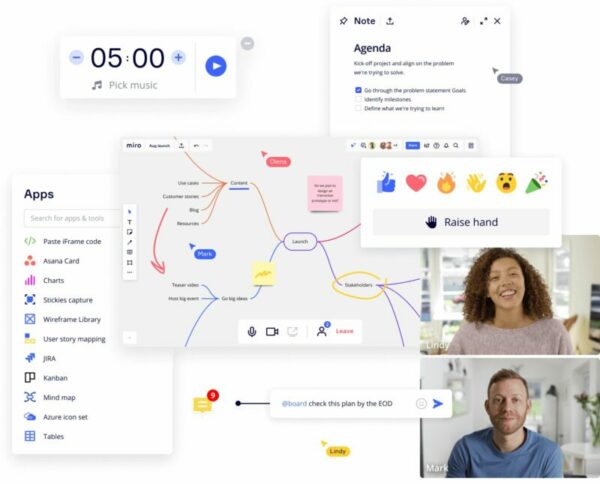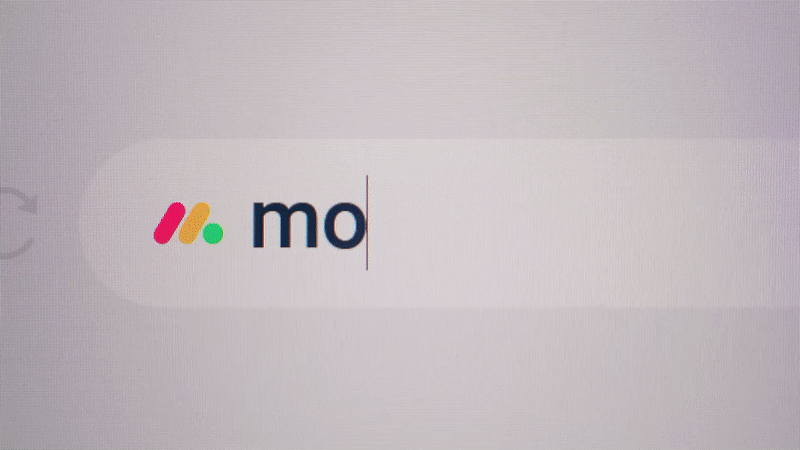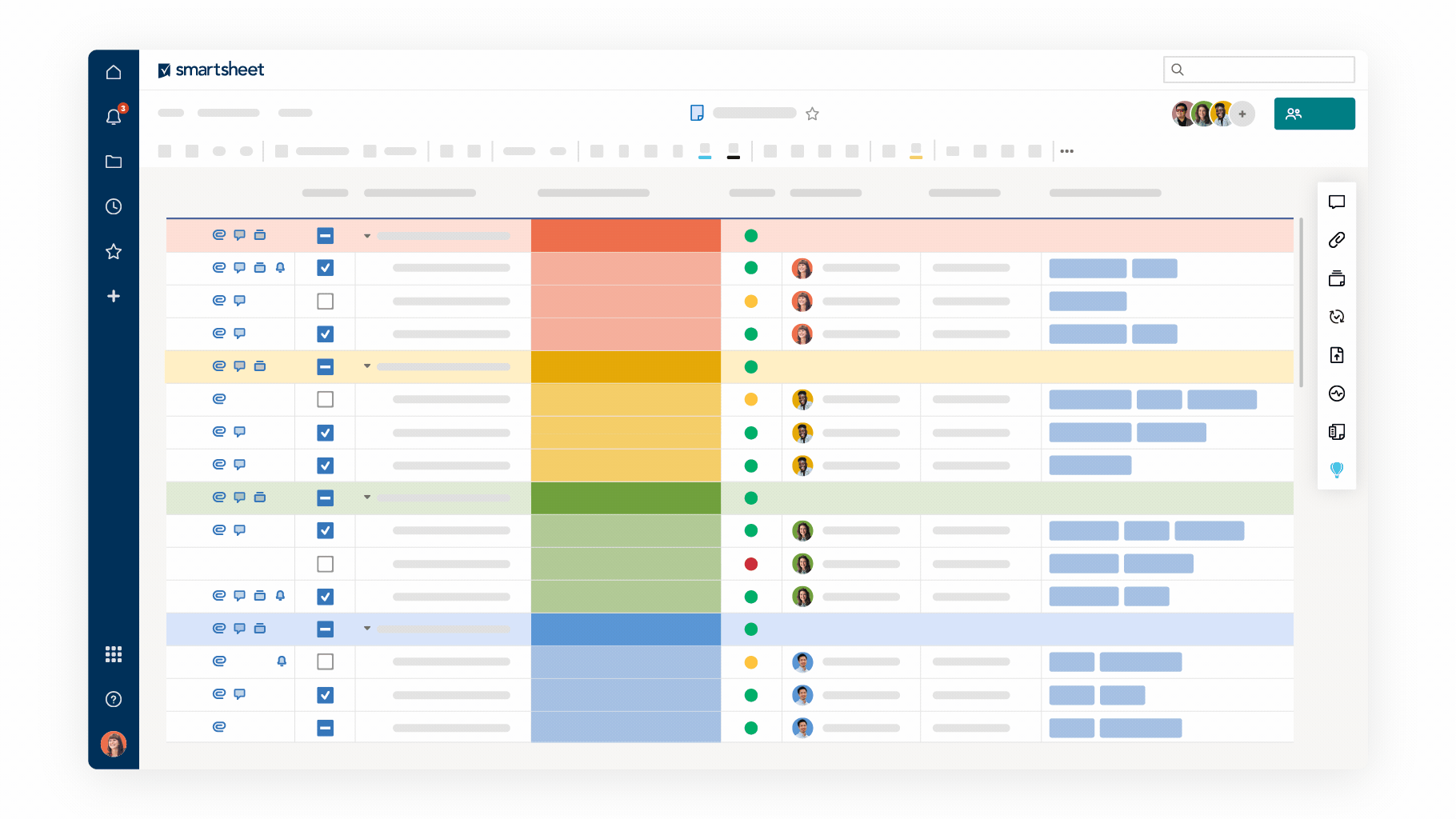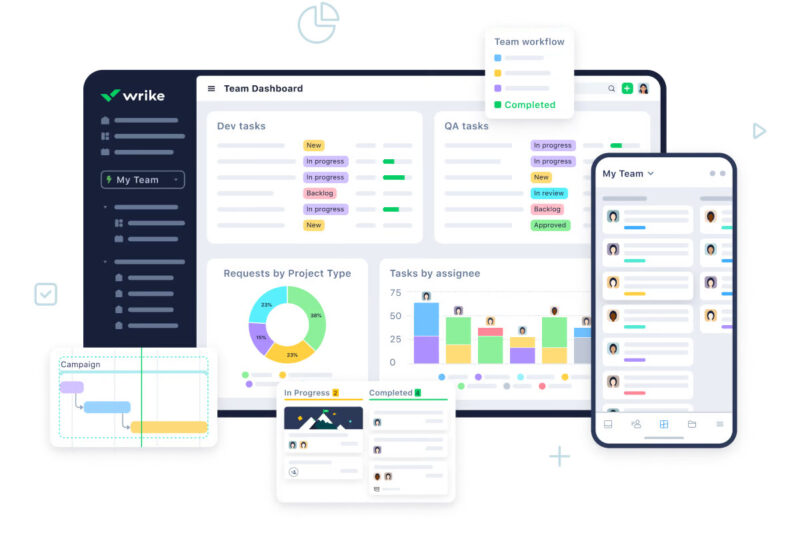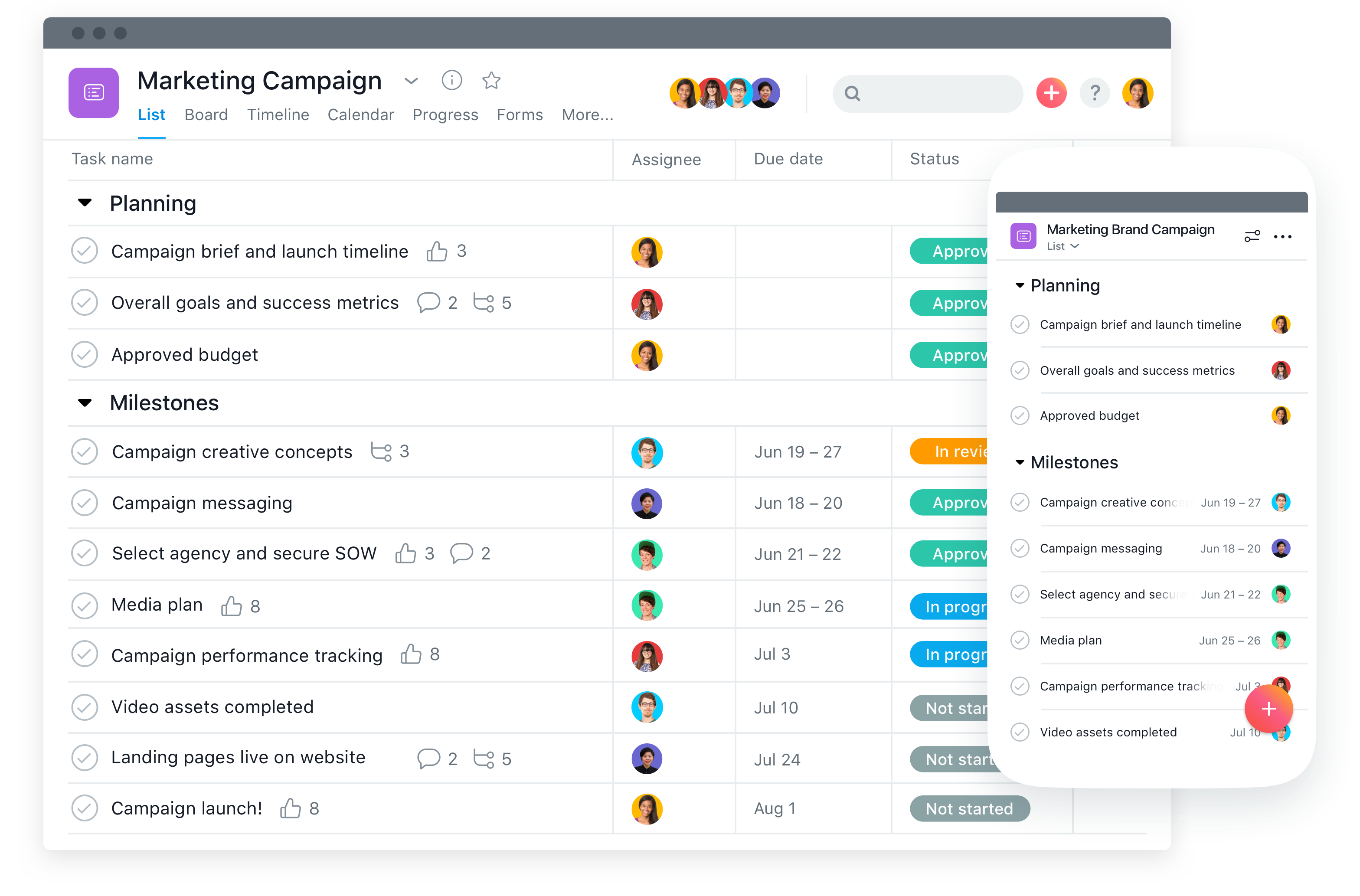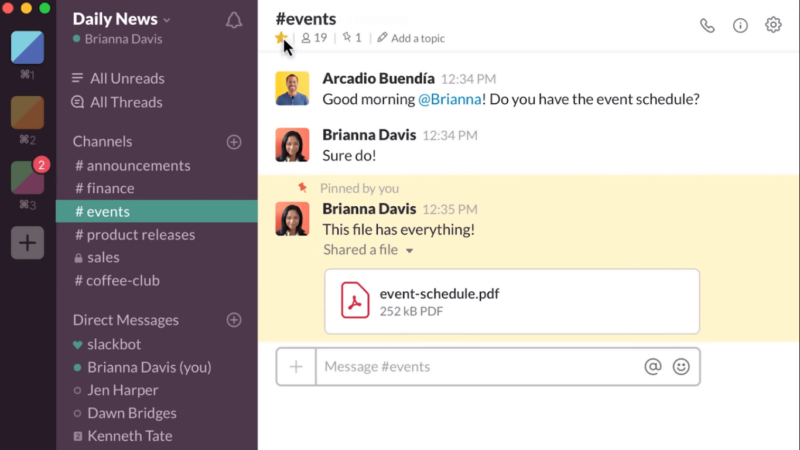Imagine a world where engineers converse fluently with marketers, designers sync harmoniously with data analysts, and every project feels like a well-orchestrated symphony.
In this article, we’ll uncover the art of cross-functional team collaboration and the strategies, tools, and best practices that make it work.

From the silent digital halls of cutting-edge collaboration platforms to the vibrant buzz of brainstorming sessions, we’ll uncover the treasures of teamwork that lie hidden within cross-functional collaboration.
So, continue reading to learn how to get your team in sync and collectively conquer the complexities of modern workplaces!
What Is Cross-Functional Team Collaboration?
Cross-functional team collaboration refers to the process where individuals with varied expertise from different departments within a business come together to work on a joint project or goal.
This approach leverages each team member’s diverse perspectives and skills, fostering innovative solutions and comprehensive strategies. Collaboration templates also provide structured frameworks that guide teams through the obstacles of their projects.
These templates indicate smart goals and ensure that communication, task allocation, and progress tracking are streamlined across time zones, making the collaborative effort more cohesive and goal-oriented.
Benefits of Cross-Functional Collaboration

✅ Benefit 1: Enhanced Innovation
Cross-functional teams bring together skill sets and backgrounds, creating a melting pot of ideas. This diversity and interaction enhance creative environments, so innovative solutions can arise organically and flourish.
✅ Benefit 2: Faster Problem-Solving
With members from various departments, cross-functional teams are informed by a broad spectrum of expertise. This multidisciplinary approach accelerates the problem-solving process.
✅ Benefit 3: Increased Agility
More frequent cross-functional collaborative work helps overcome a lack of trust between teams, enabling organizations to be more adaptable and responsive to changes. By pooling resources and knowledge from different people, this collective teamwork can help your organization pivot and adjust strategies more swiftly. Ultimately, this leads to optimized product development and better customer support, satisfying company OKRs and personal KPIs.
How to Implement Effective Cross-Functional Collaboration At Work
Here are vital steps to implement effective team collaboration cross-functionally:
👉 Step 1: Define Clear Objectives
Starting with well-defined objectives is crucial; they guide the team’s efforts and ensure everyone is aligned toward a common goal. This early clarity helps you measure progress and success.
👉 Step 2: Select the Right Team Members
Choosing team members who possess the right skills and the ability to collaborate and contribute to a team dynamic is essential. Diversity in expertise and perspective enriches the team’s problem-solving capabilities.
👉 Step 3: Establish Roles and Responsibilities
Clearly defined roles and responsibilities eliminate confusion and overlap. Make sure that each member knows their expected contributions and the exact role they will need to play in order to achieve the collective goal.
👉 Step 4: Foster Open Communication
Create an environment where open, honest communication is encouraged. Fostering open communication allows ideas to flow freely, issues will be raised and addressed promptly, and collaboration will be effective.
👉 Step 5: Utilize Collaboration Tools
Leveraging the right collaboration tools can significantly enhance team coordination, making it easier to share documents, communicate updates, and keep track of progress in real-time.
👉 Step 6: Encourage Team Building
Investing in team-building activities strengthens relationships among team members, increases trust, and improves team collaboration and overall dynamics, leading to more effective collaboration.
👉 Step 7: Set Up a Conflict Resolution Mechanism
A precise mechanism for resolving conflicts ensures that disagreements are addressed constructively and don’t hinder the team’s progress, maintaining a positive and productive work environment.
👉 Step 8: Monitor and Adjust
Regularly monitoring the team’s progress against objectives and being open to adjusting strategies helps navigate challenges and keeps the team’s actions aligned with company goals.
👉 Step 9: Celebrate Successes
Recognizing and celebrating the team’s achievements boosts morale and reinforces the value of collaboration, encouraging continued collective effort and success.
Best Cross-Functional Team Collaboration Platforms
1 Miro
Miro offers an intuitive, expansive whiteboard space where cross-functional remote teams can brainstorm, plan for future work, and visualize their initiatives. This platform promotes seamless collaboration through features like real-time co-editing by departments, sticky notes, and diagramming tools, making it ideal for mapping out complex projects and agile team workflows.
❤️ Why we love this cross-functional team collaboration tool: Miro fosters creative collaboration and project tracking across teams, making it a go-to for teams looking to innovate and solve problems in a visually engaging flowchart.
2 ClickUp
ClickUp provides a comprehensive platform with a “Cross-Functional Project by Departments” template designed to optimize collaboration across different areas of a workplace. Its features support task assignment, progress tracking, and goal setting, all within a unified workspace where all stakeholders are notified.
❤️ Why we love this cross-functional team collaboration tool: ClickUp’s versatility and customization options make it a powerful tool for team leaders looking to tailor their cross functional project management approach to their specific needs, driving efficiency and alignment. They support various HR templates, such as Gantt charts and Kanban tools.
3 monday.com
monday.com is known for its customizable workflows and colorful, user-friendly interface. The “Across Departments” template is handy for cross-functional teams, offering a structured yet flexible framework for tracking efficiency, deadlines, and dependencies across various units.
❤️ Why we love this cross-functional team collaboration tool: Standing out for its adaptability and ease of use, monday.com is accessible to teams of all sizes and types, boasting a short learning curve and a remote-friendly feature set.
4 Smartsheet
Smartsheet is a versatile platform that combines elements of online project management, collaboration, and automation into a single spreadsheet-like interface. Its multiple project dashboard templates provide a comprehensive view of project status, timelines, and critical metrics, enabling teams to stay aligned and informed.
❤️ Why we love this cross-functional team collaboration tool: The platform’s strength lies in its ability to provide big-picture real-time visibility into the progress of multiple projects across different teams.
5 Wrike
Wrike offers a dynamic project management tool geared towards delivering clear action plans. Its templates support agile methodologies, making it easier for cross-functional teams to adapt, prioritize, and execute tasks in a fast-paced environment by looking at the bigger picture.
❤️ Why we love this cross-functional team collaboration tool: Wrike is ideal for teams that need the flexibility to pivot quickly, with features that support continuous improvement and enhance team agility, sprint planning and project success.
6 Asana
Asana simplifies team collaboration software with its intuitive design and powerful task management features. It enables teams to organize projects, set deadlines, and assign responsibilities clearly, promoting transparency and accountability in the collaboration process.
❤️ Why we love this cross-functional team collaboration tool: Asana’s straightforward and practical approach to task and project management makes it a favorite for teams seeking a balance between simplicity and functionality. It also helps organize employee engagement and onboarding initiatives, such as one-on-one meetings and employee check-ins.
7 Slack
Slack is not just a messaging app; it’s a hub for team collaboration. It supports integrations with myriad tools and allows for the creation of communication channels dedicated to specific project milestones. Slack ensures that your sales teams, marketing teams, and whoever else is included in all relevant discussions. Plus, decisions are centralized and accessible for easy cross-team collaboration.
❤️ Why we love this cross-functional team collaboration tool: Slack facilitates real-time knowledge sharing and information exchange for brainstorming, making it essential for teams that value agility and timely decision-making in their collaborative efforts.
Challenges of Cross Functional Collaboration

❗️Challenge 1: Misaligned Shared Goals
Different groups of people often have conflicting priorities and objectives, leading to misalignment.
- Overcoming it: Establishing a clear, overarching project goal that aligns with each department’s contributions can create a unified direction for all team members.
❗️Challenge 2: Communication Barriers
Differences in jargon, work styles, and communication preferences can hinder effective collaboration.
- Overcoming it: Implementing standardized communication protocols and tools can help bridge these gaps, ensuring precise and consistent exchanges.
❗️Challenge 3: Lack of Role Clarity
Overlap and confusion can occur without clear definitions of each member’s role and responsibilities.
- Overcoming it: Delineating roles and responsibilities from the outset can prevent this confusion and enhance accountability within the team.
❗️Challenge 4: Resistance to Change
Individuals may resist working outside their usual departmental silos or be hesitant to adopt new online collaboration tools.
- Overcoming it: Building a culture that values adaptability and continuous learning can mitigate resistance, encouraging team members to embrace new ways of working together.
❗️Challenge 5: Difficulty in Decision-Making
The diversity of perspectives in a cross-functional team can sometimes lead to decision-making paralysis.
- Overcoming it: Establishing a decision-making framework that includes consensus-building steps and, when necessary, a final decision-maker can streamline this process.
People Also Ask These Questions About Cross-Functional Team Collaboration
Q: How can organizations measure the success of cross-functional team collaboration?
- A: Organizations can measure the success of cross-functional team collaboration by evaluating key performance indicators such as project completion rates, time-to-market for new products or services, innovation levels, and team satisfaction scores. Additionally, tracking the achievement of specific project goals and objectives and improvements in interdepartmental communication and processes can provide valuable insights into the effectiveness of collaborative efforts.
Q: How does cross-functional collaboration impact project management?
- A: Cross-functional collaboration significantly enhances project management by bringing diverse, often complementary skill sets and perspectives, leading to more innovative solutions and more thorough project planning. It improves problem-solving capabilities, facilitates risk management through broader insight, and can accelerate project timelines due to the concurrent contributions of various departments.
Q: How do you structure a cross-functional team?
- A: Structuring a cross-functional team involves selecting members from departments based on the project’s needs and ensuring a diversity of skills and perspectives. Define clear roles, responsibilities, and reporting lines to avoid confusion. Establish a strong leadership presence to guide the team. Set up communication and collaboration protocols to ensure positive interactions among team members. Regular team meetings and updates will also help keep the team aligned and focused on common objectives.
Q: How do you create a cross-functional flowchart?
- A: Creating a cross-functional flowchart involves identifying the processes or tasks involved in the project and mapping out how they flow between different departments or roles within the team. Start by outlining the main steps in the process, then assign each step to the relevant department or team member. Use a visual diagramming tool to represent these steps and their interdependencies, ensuring a clear distinction between responsibilities and the sequence of actions. This facilitates a better understanding of the overall process and potential bottlenecks.

